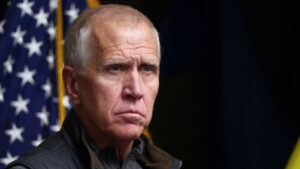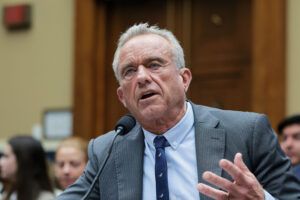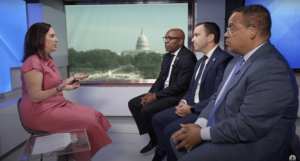The Dictatorship
National Guard troops arrive in Los Angeles on Trump’s orders to quell immigration protests

LOS ANGELES (AP) — Tensions in Los Angeles escalated Sunday as thousands of protesters took to the streets in response to President Donald Trump’s extraordinary deployment of the National Guardblocking off a major freeway and setting self-driving cars on fire as law enforcement used tear gas, rubber bullets, and flash bangs to control the crowd.
Some police patrolled the streets on horseback while others with riot gear lined up behind Guard troops deployed to protect federal facilities including a detention center where some immigrants were taken in recent days. Police declared an unlawful assembly, and by early evening many people had left.
A protester displays a poster as tear gas is used in the metropolitan detention center of downtown Los Angeles, Sunday, June 8, 2025, following last night’s immigration raid protest. (AP Photo/Eric Thayer)
A protester displays a poster as tear gas is used in the metropolitan detention center of downtown Los Angeles, Sunday, June 8, 2025, following last night’s immigration raid protest. (AP Photo/Eric Thayer)
But protesters who remained grabbed chairs from a nearby public park to form a makeshift barrier, throwing objects at police on the other side. Others standing above the closed southbound 101 Freeway threw chunks of concrete, rocks, electric scooters and fireworks at California Highway Patrol officers and their vehicles that were parked on the highway. Officers ran under an overpass to take cover.
It was the third day of demonstrations against Trump’s immigration crackdown in the region, as the arrival of around 300 federal troops spurred anger and fear among some residents. Sunday’s protests in Los Angeles, a city of 4 million people, were centered in several blocks of downtown.
Starting in the morning, National Guard troops stood shoulder to shoulder, carrying long guns and riot shields outside the Metropolitan Detention Center in downtown Los Angeles. Protesters shouted “shame” and “go home.” After some closely approached the guard members, another set of uniformed officers advanced on the group, shooting smoke-filled canisters into the street.
Minutes later, the Los Angeles Police Department fired rounds of crowd-control munitions to disperse the protesters, who they said were assembled unlawfully. Much of the group then moved to block traffic on the 101 freeway until state patrol officers cleared them from the roadway by late afternoon, while southbound lanes remained shut down.
A protestor is detained in downtown Los Angeles, Sunday, June 8, 2025, following last night’s immigration raid protest. (AP Photo/Eric Thayer)
A protestor is detained in downtown Los Angeles, Sunday, June 8, 2025, following last night’s immigration raid protest. (AP Photo/Eric Thayer)
Nearby, at least four self-driving Waymo cars were set on fire, sending large plumes of black smoke into the sky and exploding intermittently as the electric vehicles burned. By evening, police had issued an unlawful assembly order shutting down several blocks of downtown Los Angeles.
Flash bangs echoed out every few seconds into the evening.
Democratic Gov. Gavin Newsom requested Trump remove the guard members in a letter Sunday afternoon, calling their deployment a “serious breach of state sovereignty.” He was in Los Angeles meeting with local law enforcement and officials. It wasn’t clear if he’d spoken to Trump since Friday.
Their deployment appeared to be the first time in decades that a state’s national guard was activated without a request from its governor, a significant escalation against those who have sought to hinder the administration’s mass deportation efforts.
A protester confronts a line of U.S. National Guard in the metropolitan detention center of downtown Los Angeles, Sunday, June 8, 2025, following last night’s immigration raid protest. (AP Photo/Eric Thayer)
A protester confronts a line of U.S. National Guard in the metropolitan detention center of downtown Los Angeles, Sunday, June 8, 2025, following last night’s immigration raid protest. (AP Photo/Eric Thayer)
Mayor Karen Bass echoed Newsom’s comments.
“What we’re seeing in Los Angeles is chaos that is provoked by the administration,” she said in an afternoon press conference. “This is about another agenda, this isn’t about public safety.”
Their admonishments did not deter the administration.
“It’s a bald-faced lie for Newsom to claim there was no problem in Los Angeles before President Trump got involved,” White House spokesperson Abigail Jackson said in a statement in response.
Deployment follows days of protest
The arrival of the National Guard followed two days of protests that began Friday in downtown Los Angeles before spreading on Saturday to Paramount, a heavily Latino city south of the city, and neighboring Compton.
Federal agents arrested immigrants in LA’s fashion district, in a Home Depot parking lot and at several other locations on Friday. The next day, they were staging at a Department of Homeland Security office near another Home Depot in Paramount, which drew out protesters who suspected another raid. Federal authorities later said there was no enforcement activity at that Home Depot.
Demonstrators attempted to block Border Patrol vehicles by hurling rocks and chunks of cement. In response, agents in riot gear unleashed tear gas, flash-bang explosives and pepper balls.
The weeklong tally of immigrant arrests in the LA area climbed above 100, federal authorities said. Many more were arrested while protesting, including a prominent union leader who was accused of impeding law enforcement.
The protests did not reach the size of past demonstrations that brought the National Guard to Los Angeles, including the Watts and Rodney King riots, and the 2020 protests against police violence, in which Newsom requested the assistance of federal troops.
The last time the National Guard was activated without a governor’s permission was in 1965, when President Lyndon B. Johnson sent troops to protect a civil rights march in Alabama, according to the Brennan Center for Justice.
President Donald Trump told reporters as he prepared to board Air Force One in Morristown, New Jersey, Sunday that there were “violent people” in Los Angeles “and they’re not gonna get away with it.”
Trump says there will be ‘very strong law and order’
In a directive Saturday, Trump invoked a legal provision allowing him to deploy federal service members when there is ”a rebellion or danger of a rebellion against the authority of the Government of the United States.”
He said he had authorized the deployment of 2,000 members of the National Guard.
Trump told reporters as he prepared to board Air Force One in Morristown, New Jersey, Sunday that there were “violent people” in Los Angeles “and they’re not gonna get away with it.”
Asked if he planned to send U.S. troops to Los AngelesTrump replied: “We’re gonna have troops everywhere. We’re not going to let this happen to our country. We’re not going to let our country be torn apart like it was under Biden.” He didn’t elaborate.
About 500 Marines stationed at Twentynine Palms, about 125 miles (200 kilometers) east of Los Angeles were in a “prepared to deploy status” Sunday afternoon, according to the U.S. Northern Command.
Former Vice President Kamala Harris, who lives in Los Angeles, said the immigration arrests and Guard deployment were designed as part of a “cruel, calculated agenda to spread panic an d division.”
She said she supports those “standing up to protect our most fundamental rights and freedoms.”
___
Offenhartz reported from New York. Associated Press writer Michelle Price contributed to this report from Bridgewater, New Jersey.
The Dictatorship
Republican North Carolina Sen. Thom Tillis announces he will not run for re-election
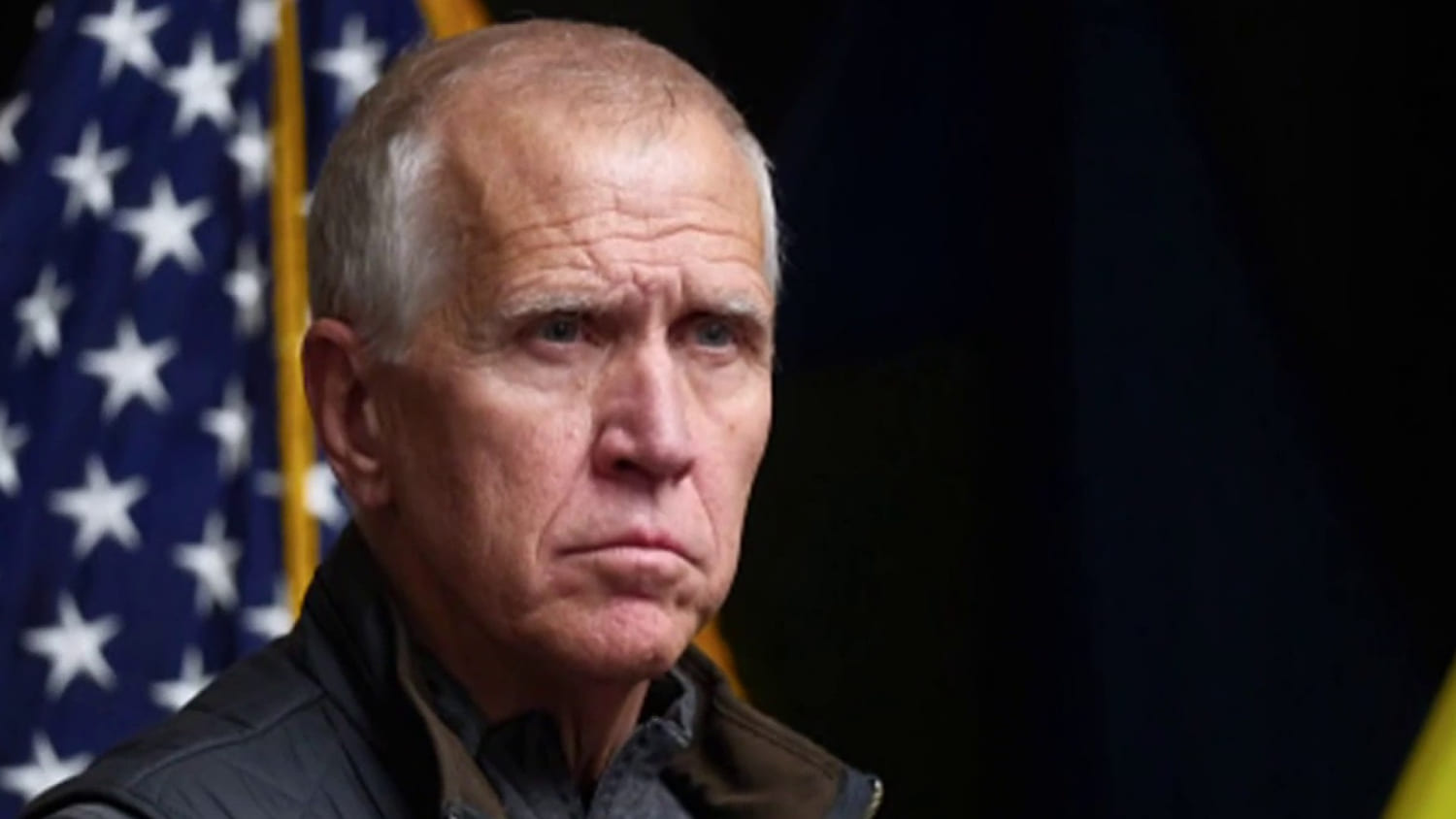
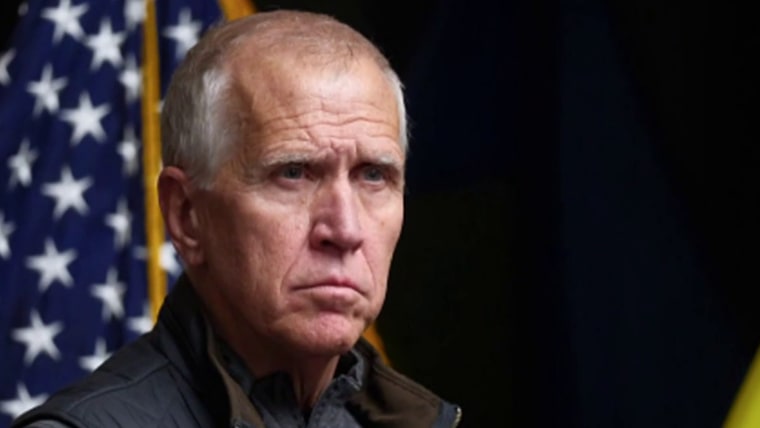
-

Analyst says it will take weeks, if not months, to know real damage to Iran’s nuclear program from U.S. airstrikes
05:12
-
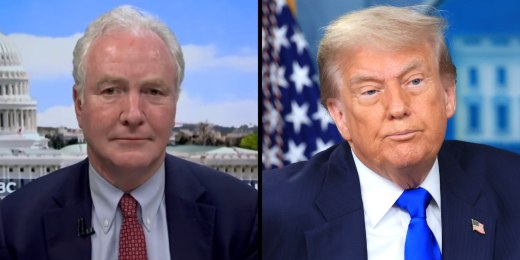
Senator Chris Van Hollen on Trump spending bill as it enters debate on Capitol Hill
08:23
-
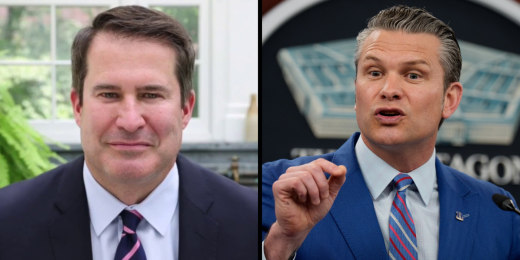
Inside the Iran airstrikes briefing: Rep. Moulton on the demeanor of Secys. Rubio, Hegseth
08:27
-
Now Playing

-
UP NEXT

‘This bill is a ripoff’: Sen. Amy Klobuchar on Trump Budget Bill
08:51
-

Family of Venezuelan man deported to El Salvador has no idea of his condition
02:53
-

Protests grow over as Florida’s ‘Alligator Alcatraz’ set to open
01:19
-

Middle East expert discusses impact of U.S. strikes on Iranian regime and Supreme Leader
06:56
-
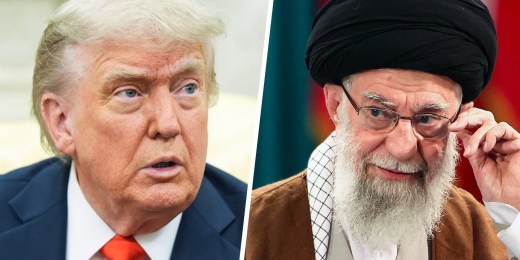
Fmr. U.S. Envoy to Iran reacts to U.S. strike on nuclear facilities and says Iran won’t negotiate soon
11:59
-

Anti-war protests form in New York City following U.S. strikes in Iran
02:27
-

Top House Armed Services Democrat: Trump violated the law with U.S. strikes on Iran
04:41
-
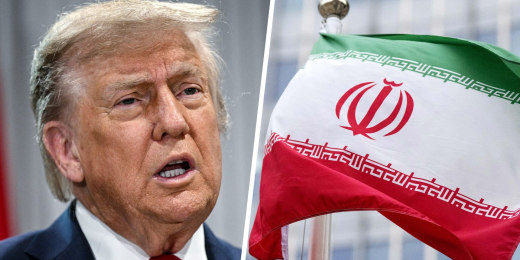
Fmr. U.S. Envoy to Iran says Trump should be more patient when seeking new Iran nuclear deal
09:16
-

Former Marine asks for sympathy for troops put in difficult position in L.A. over protests
05:05
-

Retired Lt. Gen. warns any U.S. operation against Iran’s nuclear program comes with heavy risks
08:57
-
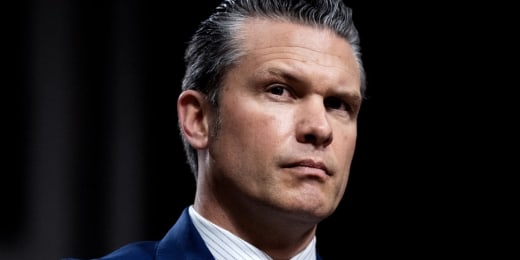
Rep. Auchincloss slams Defense Secretary Hegseth after fiery Capitol Hill national security hearing
05:46
-
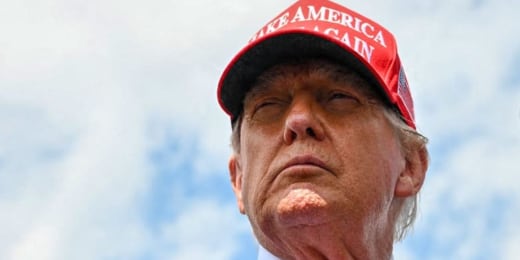
Former GOP advisor questions what advice Trump is listening to over Iran decision
07:44
-
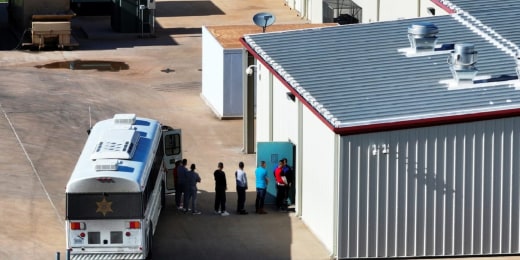
Rep. Garcia questions new rules on congressional ICE facility visits and calls them ‘illegal’
07:05
-

Fmr. Rep. Riggleman torches Trump over handling of Israel-Iran conflict and his key decision
06:48
-
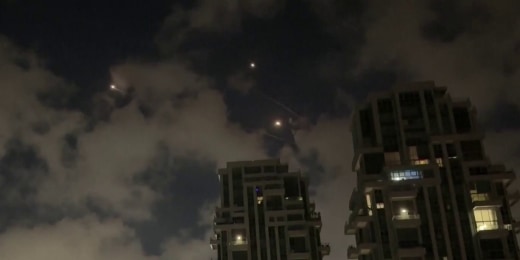
Israel says it killed top Iranian commander in strike
02:34
-

Mahmoud Khalil vows to keep speaking out against the war in Gaza: ‘The fight is far from over’
06:17
-

Analyst says it will take weeks, if not months, to know real damage to Iran’s nuclear program from U.S. airstrikes
05:12
-

Senator Chris Van Hollen on Trump spending bill as it enters debate on Capitol Hill
08:23
-

Inside the Iran airstrikes briefing: Rep. Moulton on the demeanor of Secys. Rubio, Hegseth
08:27
-
Now Playing

Republican North Carolina Sen. Thom Tillis announces he will not run for re-election
02:41
-
UP NEXT

‘This bill is a ripoff’: Sen. Amy Klobuchar on Trump Budget Bill
08:51
-

Family of Venezuelan man deported to El Salvador has no idea of his condition
02:53
The Dictatorship
RFK Jr. wants all Americans to use wearable health tech. I have questions.
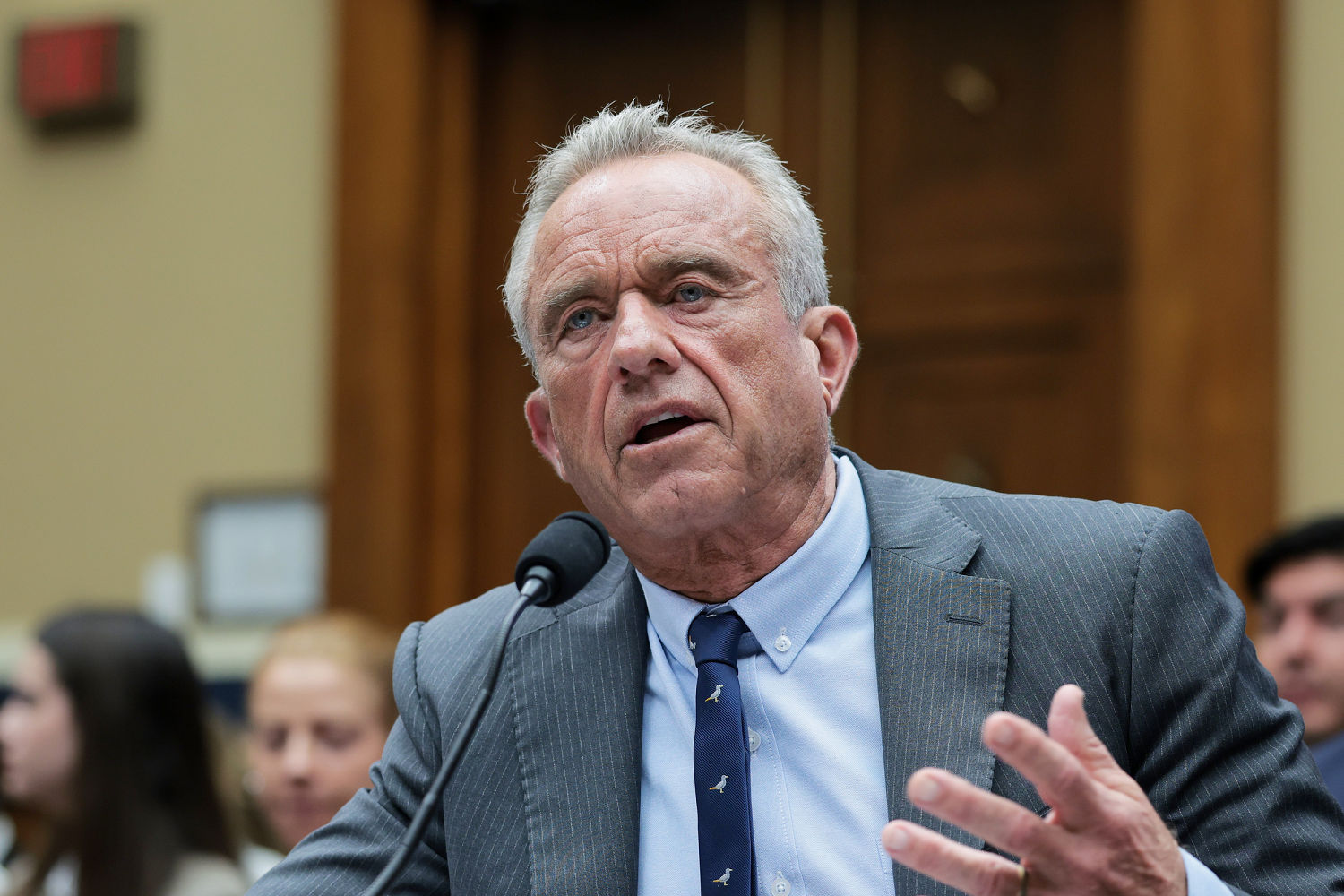
In a congressional hearing this past week, Health and Human Services Secretary Robert F. Kennedy Jr. shared his views on improving the health of Americans. “My vision is that every American is wearing a wearable within four years,” he said. And next week, his department is scheduled to launch one of “the biggest campaigns in HHS history,” focused on encouraging Americans to use wearable technology to “take control over their own health.”
Making wearable health technology accessible to more Americans is an excellent idea — the massive $63 billion market for fitness trackers and $12.6 billion glucose monitor sector are growing exponentially due in part to the fact that awareness of one’s biometrics, from steps taken to sleep quality to calories consumed, can help improve health. But we shouldn’t overstate the power of these devices to transform the well-being of Americans, both because of the limitations of these technologies and because of the administration promoting it.
Making wearable health technology accessible to more Americans is an excellent idea — but we shouldn’t overstate the power of these devices.
Wearable health aids have a long history. Leonardo da Vinci designed the first pedometer around 1500, and Holter heart monitors were invented in 1949. Digital technology, however, has accelerated innovation in this space exponentially, such that in the 15 years since the release of the first step-counting Fitbit in 2010, devices now track sleep, breath, stress levels and more.
A federal campaign to promote wearables appeals to the commonsense idea that the more you know, the better equipped you are to improve your health — and thus more Americans should have access to this knowledge. And this initiative certainly lines up philosophically with the individualistic sensibility at the heart of the “Make America Health Again” movement’s animating definition of wellness, which elevates self-knowledge — “do your own research” — above clinical expertise, especially if it involves pharmaceutical intervention. Indeed, in the hearing, Kennedy described friends who “lost their diabetes” after wearing glucose monitors, thanks to their “miraculous” awareness of the impact of their dietary choices (evidence does show that diet and exercise changes can reverse Type 2 diabetesand that continuous glucose monitoring can be effective in motivating patients to make those shifts). Notably, the proposed HHS wearables campaign would come with a price tag of $80 a month for individuals, as opposed to GLP-3s, which can cost a person over $1,000 monthly.
You don’t need to be a MAHA acolyte to find this strategy compelling for a nation struggling with both chronic illness and the cost of health care. Furthermore, large-scale advertising campaigns encouraging personal fitness are a long-standing and effective federal strategy. It was Kennedy’s uncle President John F. Kennedy who most famously employed this approach, launching a national publicity campaign to encourage Americans to be more physically active, both in their personal lives and by lobbying local officials to fund physical education and community recreation programs.
That was during the Cold War, and JFK often linked the need to get moving with military preparedness. But he also talked about taking responsibility for looking good and feeling “vigorous,” for men, women and children alike. “Soft Americans” were morally suspect and national security risks, the then-president-elect wrote in a 1960 Sports Illustrated essay, but they also looked less attractive at the beach or the pool, the environments in which he was often photographed.
Physical education classes were as important as academic offerings, his administration emphasized in pamphlets, posters and even a special-release jingle written for P.E. classes that encouraged boys and girls through a playful, synchronized routine to “get rid of that chicken fat.” These federal campaigns didn’t solve the issues of sedentariness and obesity, but they were integral in establishing the expectation that it is the responsibility of every American to care about their physical fitness.
Echoes of the elder Kennedy’s approach are unmistakable in Robert F. Kennedy Jr.’s announced advertising campaign. The differences, however, should give us pause. For one, the sophisticated wearable technology the health secretary celebrates as “miraculous” is much more powerful than the toe touches and jumping jacks promoted in JFK’s day. This is a boon, but we should be wary of the “techno-utopianism” that assumes more sophisticated technology always yields a better future.
We should not overstate the “miraculous” potential of any intervention, especially given this administration’s repeated ethical breaches on questions of security and science.
Psychologists, for example, track a recent rise in orthorexia, body dysmorphia and anxiety, disorders that only stand to be aggravated by access to endless streams of biometric data. More philosophically, sociologists warn of the dangerous tendency toward “the quantified self” and attendant “intimate forms of surveillance,” in which we normalize defining ourselves as an agglomeration of figures and metrics, existing only to be optimized.
Most immediately, as Kennedy was asked in the hearing but did not clearly answer, are concerns about data collection and privacy, especially relevant due to recent breaches like the 23andMe hackwhich leaked the data of millions of users to the public and potential nefarious actors. Fitness tracker data has already created a specific liability. The Strava running app, for example, has repeatedly revealed sensitive locations of troops and political figures to the public.
These are thorny but perhaps resolvable problems. It is true that making America healthy is an urgent priority and that individuals should be empowered to be stewards of their own well-being. We must use every tool at our disposal to achieve better health outcomes, and this can include partnering with the dynamic fitness and technology industries, the innovation of which outpaces that of the public sector.
That said, we should not overstate the “miraculous” potential of any intervention, and especially given this administration’s repeated ethical breaches on questions of security and science — and even its alleged affinity for eugenics — we should be especially vigilant about how this initiative is plays out.
Natalia Mehlman Petrzela is Professor of History at The New School in New York City. She is the author of two books, most recently “Fit Nation: The Gains and Pains of America’s Exercise Obsession,”and is currently a Carnegie Fellow, working on a new book about education and political polarization.
The Dictatorship
Pete Hegseth’s press conference shows how the Trump administration views the media’s job
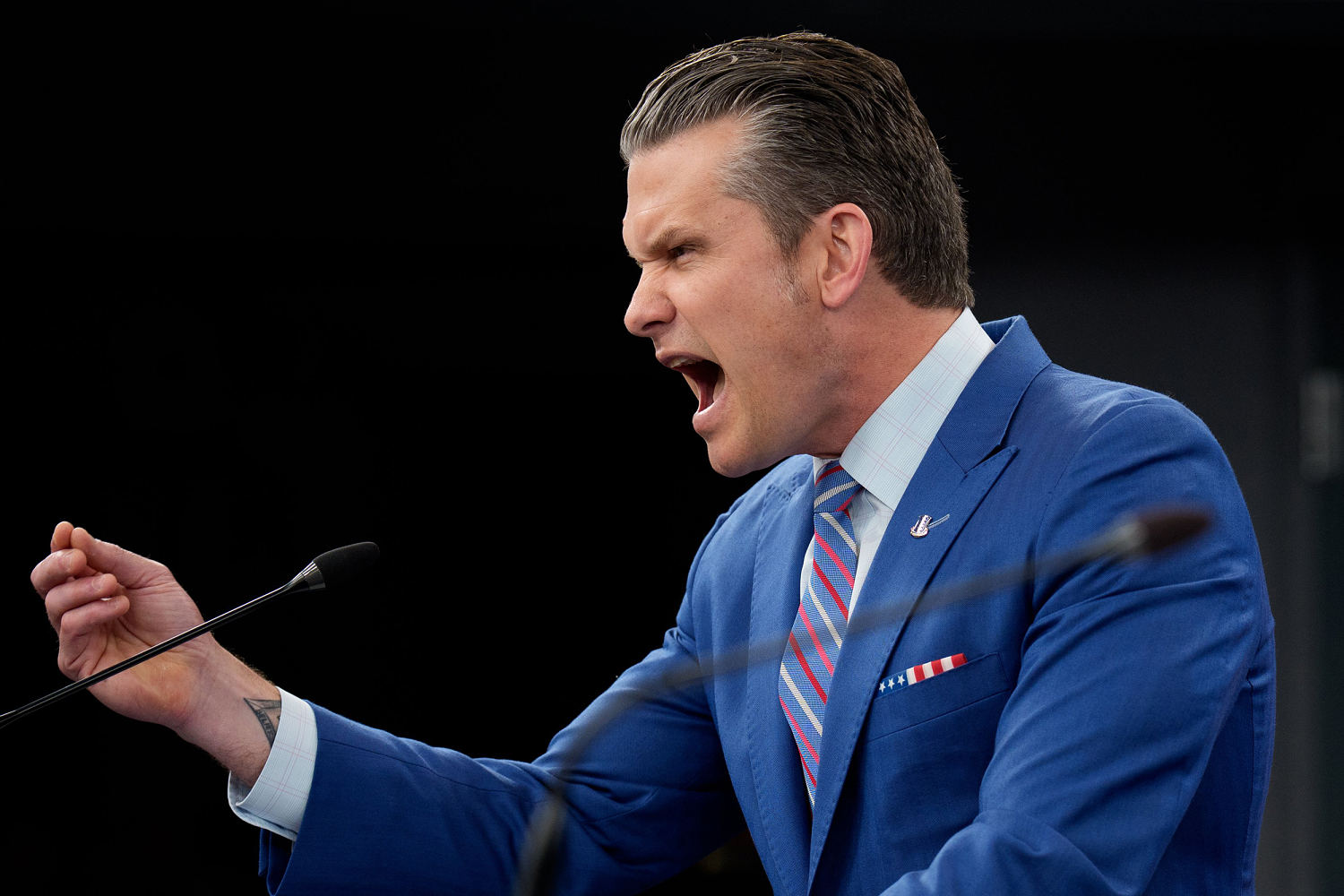
Defense Secretary Pete Hegseth was in full crybully mode during a Thursday news conference that, according to a Truth Social post from President Donald Trump, was intended “to fight for the Dignity of our Great American Pilots” and provide “interesting and irrefutable” evidence of the “LEGENDARY” success of last week’s unilateral U.S. attack on Iran’s nuclear facilities.
But Hegseth didn’t provide definitive evidence of the actual extent of the damage inflicted on those facilities by 30,000-pound bunker-busting bombs — or clarity on whether Iran pre-emptively moved its stash of weapons-grade uranium. Instead, the secretary complained that certain media outlets failed to act as unquestioning cheerleaders of a stunning act of aggression against a longtime U.S. adversary — an attack that the president had immediately declared an unequivocal success.
The 42-minute press conference was a useful distillation of the Trump administration’s posture vis-à-vis news coverage: playing the pure-as-driven-snow victim while lashing out in fashion.
It is quite literally the job of reporters to ask the government for evidence to back up its claims.
Hegseth insisted the attack was successful in “decimating — choose your word — obliterating, destroying Iran’s nuclear capabilities.” He blasted the press for reporting on a leaked preliminary intelligence assessment by the Pentagon’s Defense Intelligence Agency, which asserted that the U.S. attack may have only set back Iran’s nuclear program by months.
The secretary repeated the fact that the DIA’s initial assessment was of “low confidence” and insisted the reporting should have instead been about the awesomeness of the weapons and the bravery of the pilots who conducted the mission. I’m sure the weapons were awesome and the pilots were brave — and details of those tools of war and the risks of the mission were, in fact, reported widely in the mainstream press. But no matter which party is in power, it is quite literally the job of reporters to ask the government for evidence to back up its claims. And few details are more crucial to verify than those pertaining to military conflict.
That’s not how Hegseth, a former co-host of “Fox & Friends,” sees the media’s role in covering the Trump administration.
“How about we celebrate … how about we talk about how special America is that only we have these capabilities? I think it’s too much to ask, unfortunately, for the fake news,” Hegseth added. “We’re urging caution about pre-premising entire stories on biased leaks to biased publications trying to make something look bad. How about we take a beat, recognize first the success of our warriors, hold them up, tell their stories, celebrate that, wave an American flag, be proud of what we accomplished.”
But that’s the thing. We don’t know “what we accomplished.” That’s what journalists are asking the government, represented by Hegseth, to prove by sharing actionable evidence.
Hegseth even lashed out at his former colleague, longtime Fox News national security correspondent Jennifer Griffin, for having the temerity to ask the defense secretary about satellite imagery that showed at least a dozen trucks at one of Iran’s nuclear facilities days before the attack.
“Jennifer, you’ve been about the worst. The one who misrepresents the most intentionally,” the former daytime talk show host scolded the longtime hard-news reporter. Griffin retorted, “In fact, I was the first to describe the B-2 bombers, the refueling, the entire mission with great accuracy … so I take issue with that.”
Trump, long known to hire people based on their Fox News appearances, gave Hegseth high marks for his performance.
The president — a notorious anti-free speech ideologue — was on a press-hating tear of his own this week. He called for the firing of BLN reporter Natasha Bertrand, posting to Truth Social, “I watched her for three days doing Fake News. She should be IMMEDIATELY reprimanded, and then thrown out ‘like a dog.’” And the president also had his lawyer threaten to sue The New York Times and BLN for reporting on the DIA’s initial post-attack intelligence report. According to the Times, Trump’s lawyer wrote that the paper’s reporting “had damaged Mr. Trump’s reputation” and demanded a retraction and apology for “false,” “defamatory” and “unpatriotic” reporting.
It doesn’t get much more “crybully” than the most powerful person in the world siccing his lawyer on news outlets whose reporting on a government document hurt his feelings.
But there’s a lesson here for institutions, including universities, white shoe law firms and media corporations that continue to face Trump’s shakedown threats: Don’t give the schoolyard bully your lunch money in the hopes that he won’t demand it again.
Don’t give the schoolyard bully your lunch money in the hopes that he won’t demand it again.
The Times’ deputy general counsel, David E. McGraw, responded to Trump’s legal threat with a letter of his own, writing that it would be “irresponsible for a president to use the threat of litigation to silence a publication” for reporting on the government’s own intelligence that suggested “the President may have gotten it wrong in his initial remarks to the country.”
“No retraction is needed. No apology will be forthcoming. We told the truth to the best of our ability. We will continue to do so,” the letter concluded.
That’s how you do it. Simply ignore being insulted as “unpatriotic” for asking questions to which the public deserves to know the answers. Don’t report on war as if it were a child’s game of heroes and villains and super-cool fireworks and explosions. Make the government prove its own claims. And do not agree to settlements when it comes to Trump’s bogus, anti-free speech lawsuit lawfare. Refuse to be bullied and all the bullies can do is cry more.
Anthony L. Fisher is a senior editor and writer for BLN Daily. He was previously the senior opinion editor for The Daily Beast and a politics columnist for Business Insider.
-

 The Josh Fourrier Show8 months ago
The Josh Fourrier Show8 months agoDOOMSDAY: Trump won, now what?
-
Uncategorized8 months ago
Bob Good to step down as Freedom Caucus chair this week
-
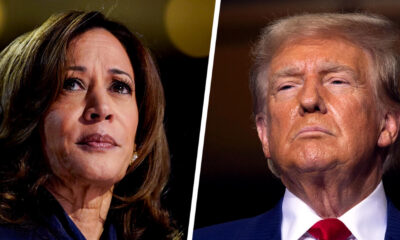
 Politics8 months ago
Politics8 months agoWhat 7 political experts will be watching at Tuesday’s debate
-

 Politics8 months ago
Politics8 months agoHow Republicans could foil Harris’ Supreme Court plans if she’s elected
-
Economy8 months ago
Fed moves to protect weakening job market with bold rate cut
-
Economy8 months ago
It’s still the economy: What TV ads tell us about each campaign’s closing message
-
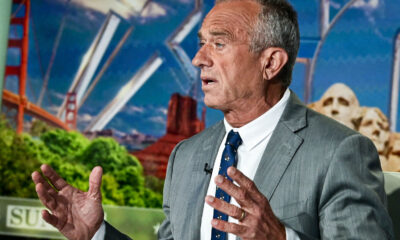
 Politics8 months ago
Politics8 months agoRFK Jr.’s bid to take himself off swing state ballots may scramble mail-in voting
-
Uncategorized8 months ago
Johnson plans to bring House GOP short-term spending measure to House floor Wednesday




